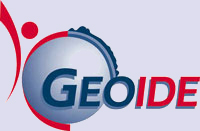Problem Statement
To provide meaningful answers and satisfy the most stringent requirements of important quests and applications of geodesy, geomatics, and of earth and atmospheric sciences in general, it is necessary to define a highly accurate, globally consistent, active, and integrated reference system. In the past, our team has made significant contributions (ACQ#10, ACQ#SID) in the research and development of certain vital components of the Canadian Spatial Reference System (CSRS) namely, in accurate geoid modeling.
While the geoid approximates mean sea level (MSL), it is clear that MSL is not level. MSL is a long-term average of the sea surface heights (SSH) observed at a tide gauge, and serves as a local datum for heights. Sea-level records at tide gauges have been providing us with MSL information for decades, nonetheless, with the inherent problems of limited spatial distribution and suboptimal coastal locations. General ocean circulation, steady-state response of air-sea interface, variation of physical properties of the ocean and weather, introduce departure of the MSL from the equipotential surface (geoid). The MSL/geoid separation is of the order of one metre, and forms a “topography” with respect to the geoid known as sea surface topography (SST). The SST is location dependent and its value must be known to determine the displacement of the geoid from MSL measurements near the coast (MSL-SST=geoid). MSL is a measurable quantity whereas the geoid is not; we need accurate SST to determine an accurate geoid.
Altimetric space missions provide independent global measurements of the instantaneous SSH with respect to a reference ellipsoid. In three decades, satellite altimeters have improved their measurement accuracy by three orders of magnitude and have revolutionized the study of large-scale ocean circulation with repeat orbits. Repeated instantaneous SSH measurements provide the mean SSH. In principle, satellite altimeters provide improved measurements of global sea-level change over shorter averaging periods. Whereas the tide gauge and altimetry methods provide an inductive approach to SSH determination through measurement and analysis, theoretical modeling of the ocean general circulation on the other hand constitutes a deductive approach that has become relatively common, in part due to the rapid increase in computer power. New ocean general circulation models have been constructed by incorporating various innovations in modeling of ocean physics. A combination of inductive and deductive approaches is necessary to overcome the shortcomings of each method of SST determination. This combination, known as data assimilation, has improved dramatically the fidelity of ocean modeling to a stage where models are utilized beyond idealized process studies and are now employed (e.g. by Foreman and Thompson) to hindcast and forecast the actual circulation of both the deep ocean and coastal seas. Many of these models assimilate historical and real-time observations. Foreman and his colleagues have achieved cm-level accuracy of the SSH (in relative sense) along the BC outer coast through the assimilation of tide gauge and altimetry data.
Sea level change is a topic of profound importance to many diverse groups in our society. Those who live in coastal areas are concerned about the socio-economic consequences of possible rapid sea-level rise. Global sea-level is expected to increase by about half a meter over the next century in response to natural processes and climate change and its monitoring may contribute to the validation and improvement of predictions from climate models. Thus, measuring and modelling the spatio-temporal characteristics of sea-level change will contribute to our understanding of global change and mitigation of its effects. It will allow the determination of an accurate SST that will improve both land and marine geoid with all the implications for a global ocean observing system capability for climate and other maritime applications. We emphasise that SST is a spatial variable and ideally time invariant (very long-term average), whereas satellite altimetry provides temporal variations of the SSH, which when averaged over repeated tracks may remove the time variability and thus be suitable for SST estimation. In this case, a very accurate marine geoid model is needed to convert SSH to SST. In coastal areas matters become more complicated and the use of geodetic, tide gauge and other data will provide the missing link through assimilation into ocean dynamic models.
